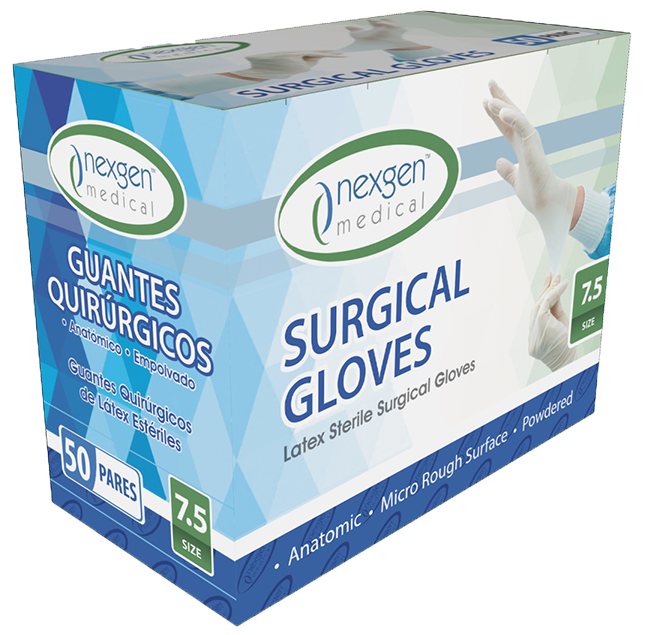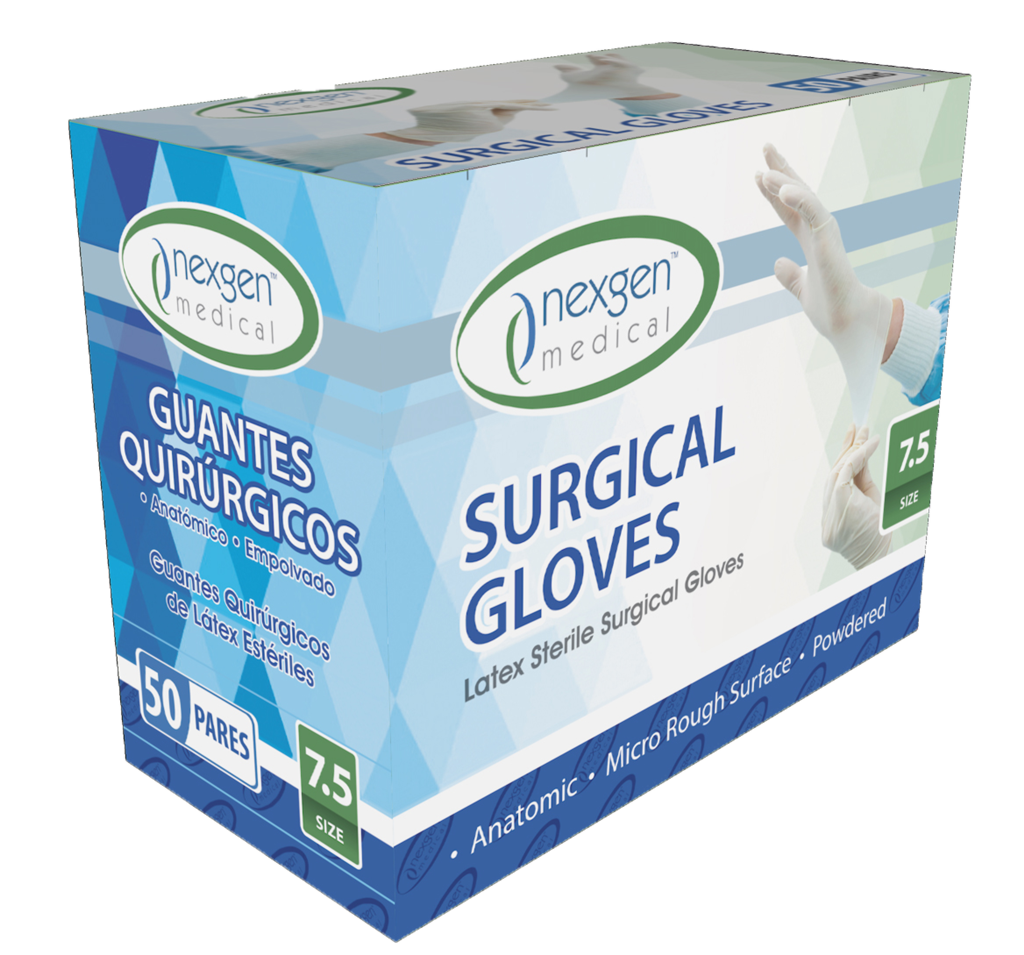Surgical Latex Gloves, Disposable Hand Gloves, Surgical latex Gloves, Surgical Gloves, latex surgical gloves, latex gloves, medical glove, disposable gloves,
Classified as medical devices, surgical gloves are the highest-grade category of medical gloves and a key component of your team's surgical supply cabinet. As a comprehensive category, medical gloves are used whenever there is a chance of your team having contact with bloodborne pathogens or other environmental contaminants.

Since the risk
associated with such procedures and environments is so high, medical gloves are tested rigorously and must meet specific guidelines set forth by the Food and Drug Administration, particularly related to the acceptable quality level for pinholes. Sterile surgical gloves will have a lower pinhole acceptable quality level than other categories of non-sterile gloves.
In general, surgical gloves are of higher quality than general medical or exam gloves. Surgical gloves are designed specifically to provide high tensile strength, plus the tactile feel, sensitivity, Surgical Latex Gloves, and accuracy that surgical teams require.
History of Surgical Gloves
Surgical gloves became available in the early 1840s, but many surgeons were reluctant to wear them because they were uncomfortable, inflexible, and generally non-functional for some time. In 1878, Thomas Forster of the India-Rubber Works in Surrey, England, received a patent to manufacture gloves specifically for surgical operations.
Not surprisingly, as surgeons learned more about bacteriological contamination, wearing surgical gloves became more common. Historical records don't show who was the first to require surgical gloves for all surgical procedures. However, we do know that by 1878, a New York City gynecologist named T. Gaillard Thomas allowed select members of his surgical staff to wear surgical gloves in order to protect their hands from the effects of the harsh chemicals used to clean their surgical instruments.
For quite some time, most surgeons allowed their teams to wear surgical gloves while they themselves remained bare-handed in the operating room in order to preserve their desired level of delicacy, touch, and tactile sensitivity. At the time, most surgeons believed that effective hand-washing was sufficient to protect patients from wound infection. However, a clinical study by German scientist Bernard Kronig in the mid-1890s revealed that hand-washing alone was insufficient protection. Interestingly, even with this evidence-based recommendation, the widespread and international adoption of sterile surgical gloves as a necessity did not occur until after World War I.


